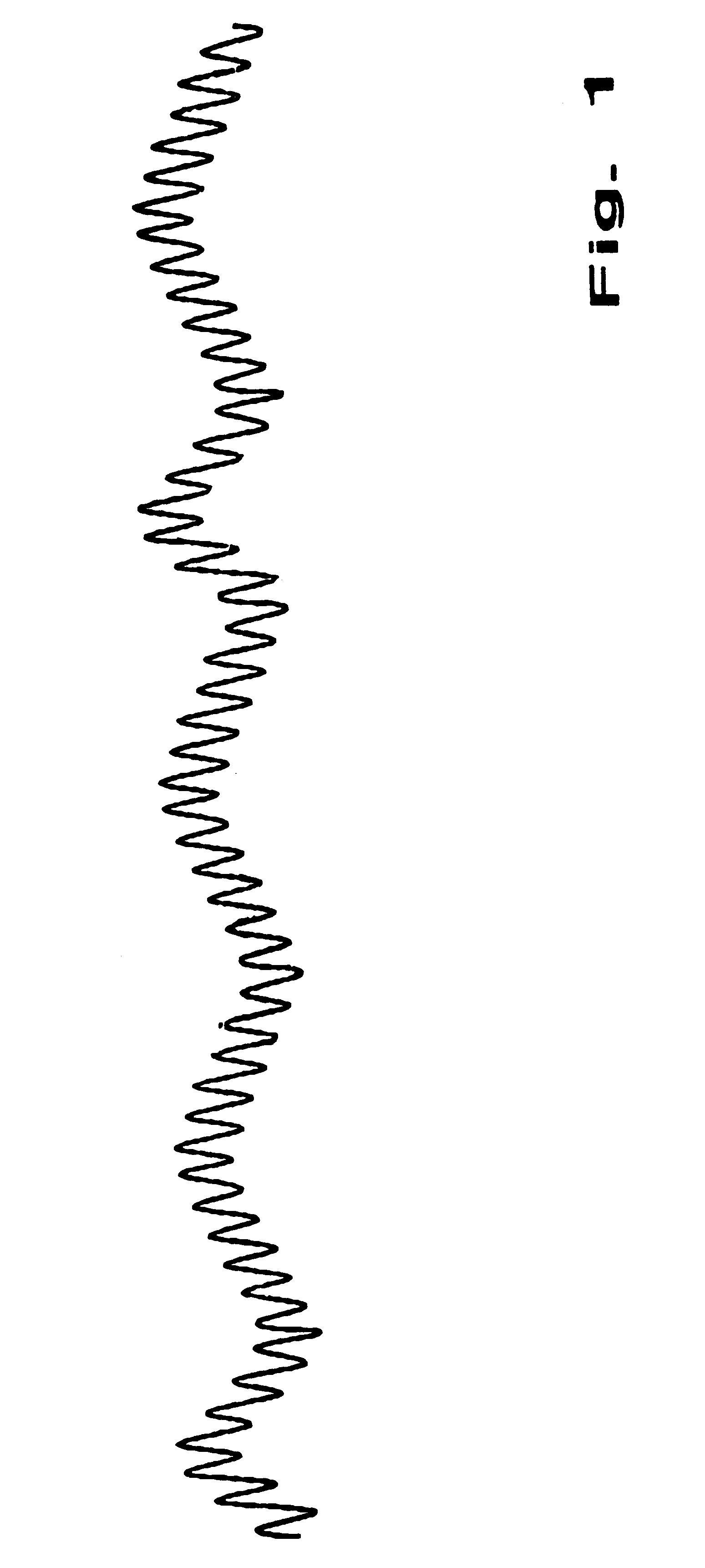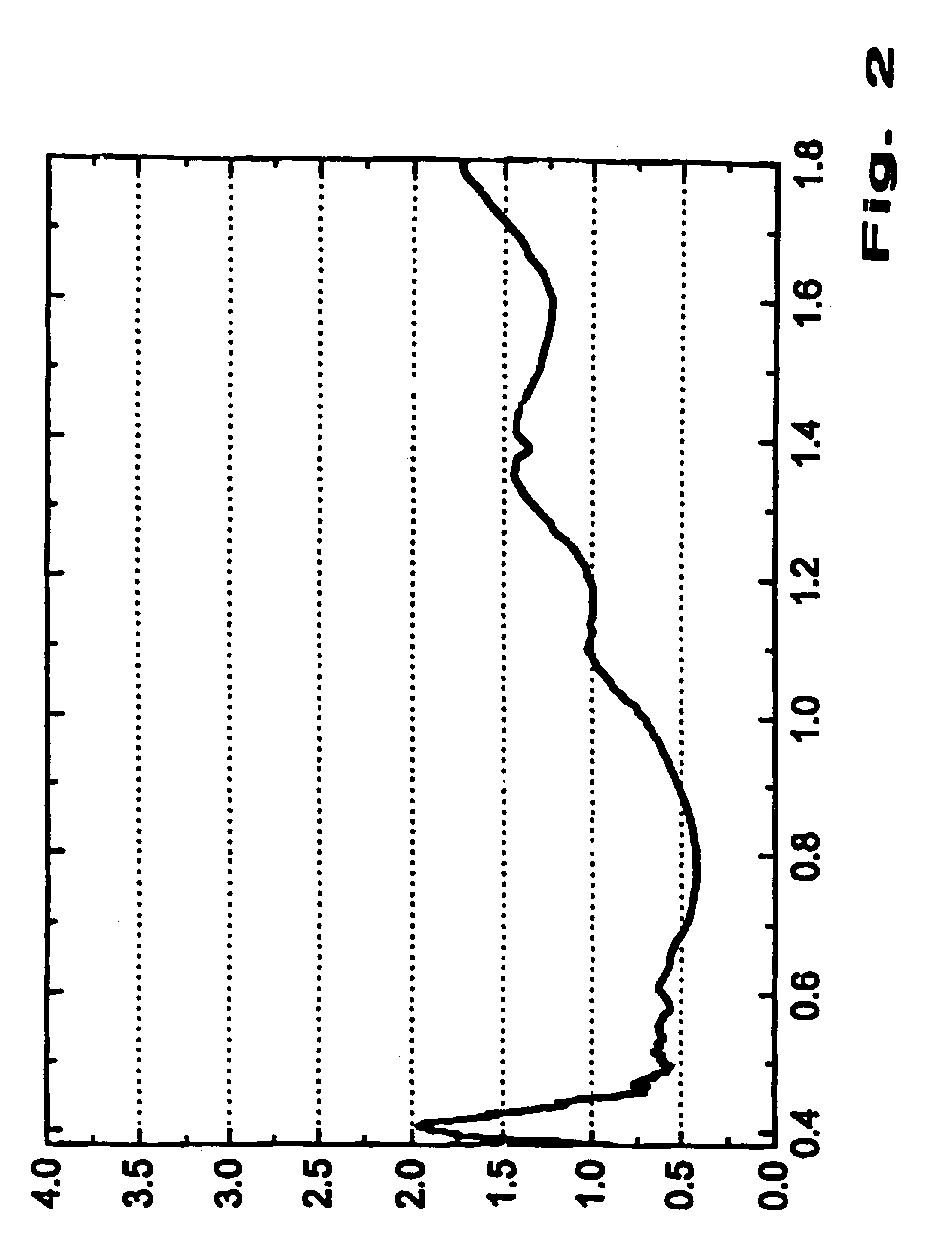Antireflective coating and method of manufacturing same
- Summary
- Abstract
- Description
- Claims
- Application Information
AI Technical Summary
Benefits of technology
Problems solved by technology
Method used
Image
Examples
Embodiment Construction
The merely schematic illustration in FIG. 1 shows a surface profile in a cross-sectional view of the inventive antireflective layer. The macro structure is subjected to a stochastic--i.e. non-homogeneous--distribution and, in analogy with the technique of transmission of electromagnetic waves, it corresponds to the form of a carrier wave on which the surface structure illustrated in FIG. 1 may be superimposed. The micro structure is quasi modulated onto the carrier wave or the macro structure, respectively.
FIG. 2 shows a diagram which corresponds to a measurement for measuring the reflective properties of an optically transparent medium having a refractive index of 1.6. What can be clearly recognised is the fact that the hemispheric reflection is definitely lower than 2% over the entire range of wavelengths in the visible range as well as in the joining infrared range. Comparative measurements with mere antiglare antireflective layers have gone to show that these are higher than the...
PUM
| Property | Measurement | Unit |
|---|---|---|
| Length | aaaaa | aaaaa |
| Depth | aaaaa | aaaaa |
| Structure | aaaaa | aaaaa |
Abstract
Description
Claims
Application Information
 Login to View More
Login to View More - R&D
- Intellectual Property
- Life Sciences
- Materials
- Tech Scout
- Unparalleled Data Quality
- Higher Quality Content
- 60% Fewer Hallucinations
Browse by: Latest US Patents, China's latest patents, Technical Efficacy Thesaurus, Application Domain, Technology Topic, Popular Technical Reports.
© 2025 PatSnap. All rights reserved.Legal|Privacy policy|Modern Slavery Act Transparency Statement|Sitemap|About US| Contact US: help@patsnap.com



